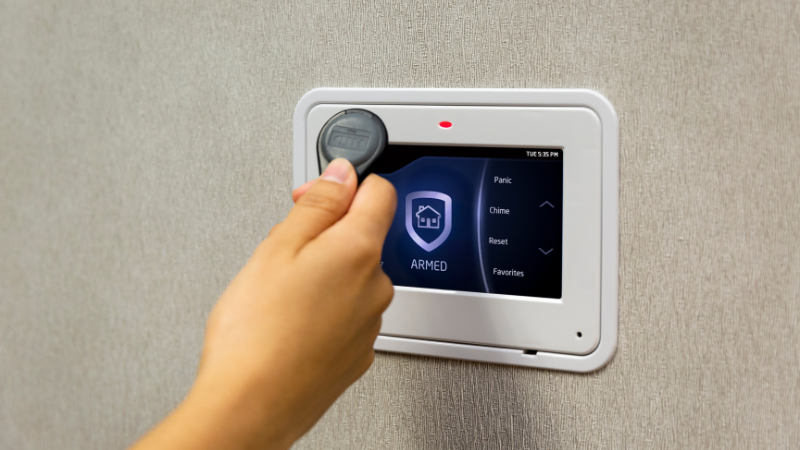Intrusion Detection in a Layered Security Strategy
In an era where physical and digital threats increasingly converge, no single solution is enough on its own. That’s why organizations turn to a Layered Security Strategy, a proven defense-in-depth model where multiple safeguards work together. At the core of this strategy is intrusion detection, a system designed to alert you to unauthorized access before it escalates into a costly incident.

The concept of defense-in-depth (or layered security) is well established in both physical security and cybersecurity. Rather than relying on a single barrier, multiple overlapping controls work together—if one fails or is bypassed, others remain to catch the threat.
Intrusion detection provides businesses with early warnings of unauthorized entry attempts, notifications to monitoring centers, and deterrence through alarms and system visibility. WTS solutions also come with integration capabilities with video surveillance and access control. Intrusion alarm systems are considered foundational to any business security plan, with 24/7 monitoring, panic alarms, and environmental protections woven into a single platform.
Why a Layered Security Strategy Matters
A Layered Security Strategy combines overlapping measures, so if one control fails, others remain in place. In physical security, these layers often include:
- Perimeter barriers (fencing, gates, doors)
- Access control systems (badges, biometrics, card readers)
- Intrusion detection
- Video surveillance
- Environmental sensors (smoke, flood, temperature)
- 24/7 monitoring and response
Intrusion detection sits at the center of these layers, linking barriers and monitoring together to provide real-time alerts and deterrence. This integrated approach makes intrusion detection a powerful tool within a broader security ecosystem.
Best Practices for Using Intrusion Detection
To maximize the value of intrusion detection in a layered security architecture, consider these guidelines:
- Risk-driven sensor placement
Perform a threat and vulnerability assessment to prioritize where sensors go (doors, windows, loading docks, high-value areas). Not all zones need the same sensitivity or redundancy. - Integration and correlation
Tie alarms into video, access control logs, or building automation systems. If an alarm goes off, cross-reference camera footage or door events to validate. - Regular testing and supervision
Conduct walk tests, battery tests, sensor diagnostics, and central supervision of alarm communications to detect faults before an attacker does. - Tiered arming and partitioning
Use area-based arming, schedules, and partitions to balance security and usability (e.g. some zones armed only during off-hours). - False alarm management
Use verification techniques (video, access logs) and avoid unnecessary triggers (pets, HVAC systems) so response teams aren’t overwhelmed by false alerts. - Incident response planning
Define clearly how alarm events are handled: who gets notified, how events escalate, whether security or police are dispatched, how video is reviewed, etc.
Adopt the Defense-in-Depth Method
Intrusion detection is not a standalone tool—it’s a critical piece of a Layered Security Strategy. By combining intrusion detection with video, access control, and 24/7 monitoring, WTS helps businesses protect assets, people, and facilities more effectively.
When properly designed, deployed, monitored, and maintained, intrusion detection systems bridge the gap between passive barriers (walls, doors) and active monitoring (video, human response). In doing so, they reinforce every other layer, improving detection, reducing risk, and enabling actionable response.
Ready to adopt the defense-in-depth method for your business? Let’s talk. 843.236.6436.
Ready for IT that WORKS for your business?

Schedule a 15-minute meeting with our team.
- Managed IT Services
- Business Phone Systems
- Managed Print
- Cybersecurity
- Cloud Services
- Data Cabling
